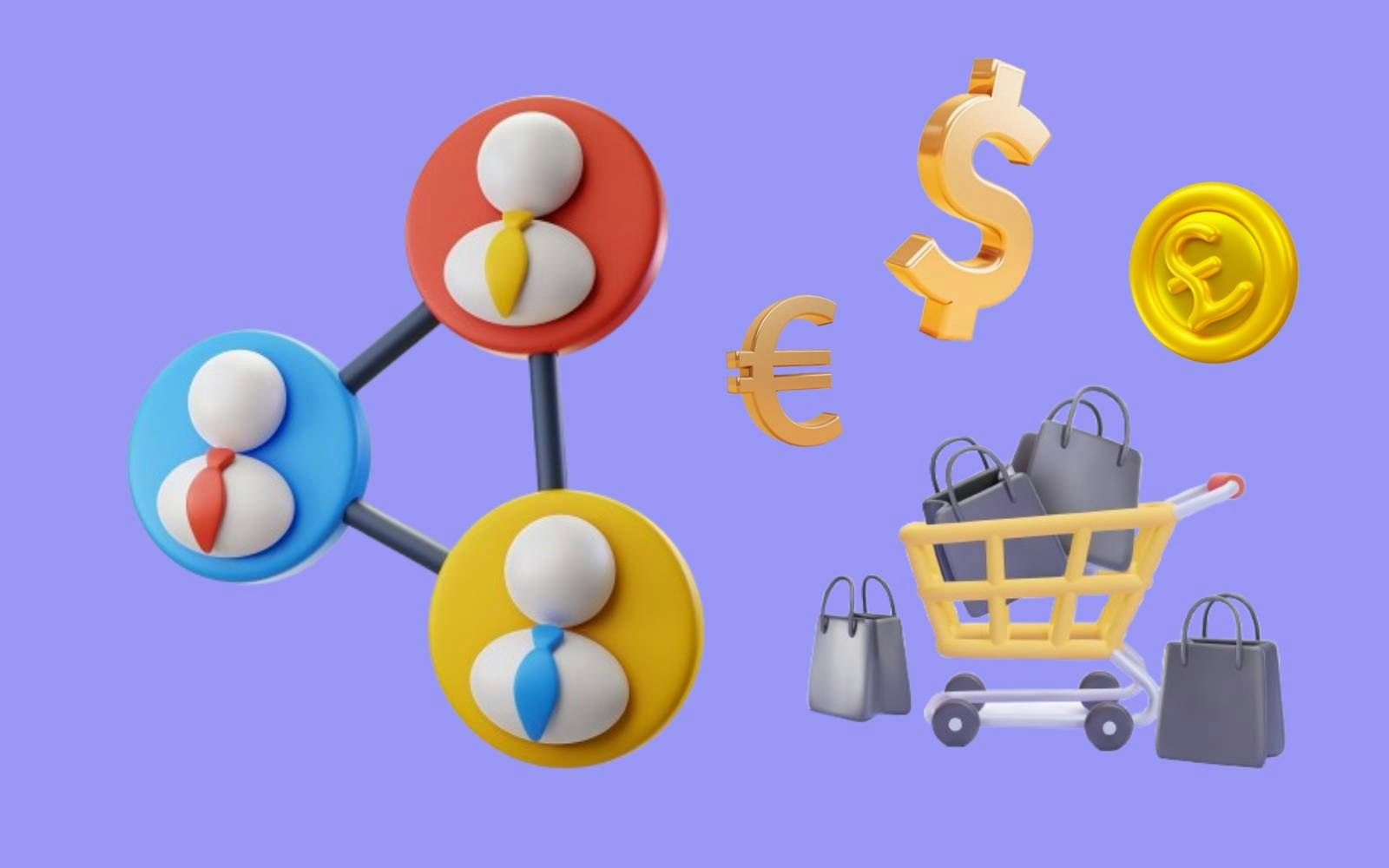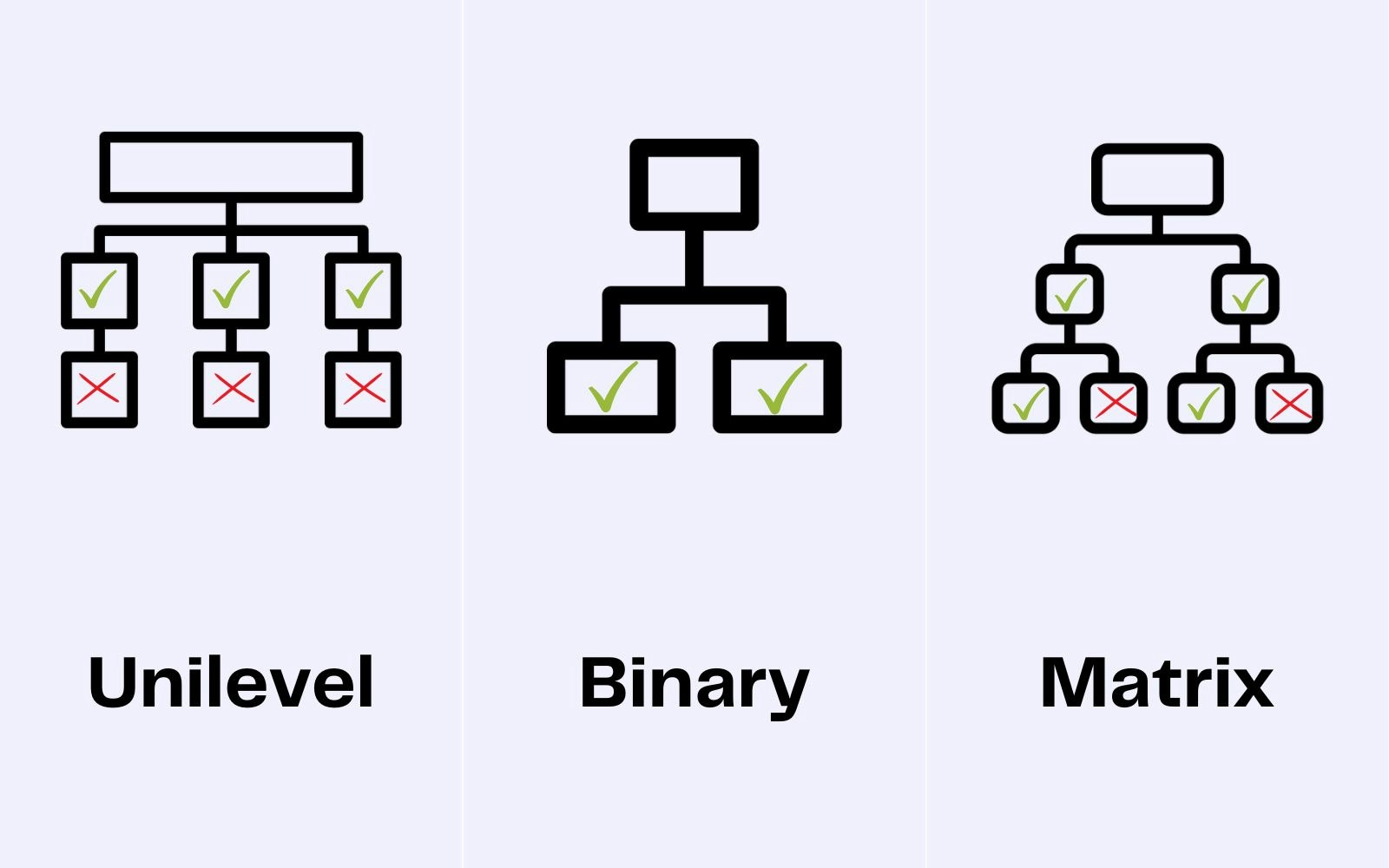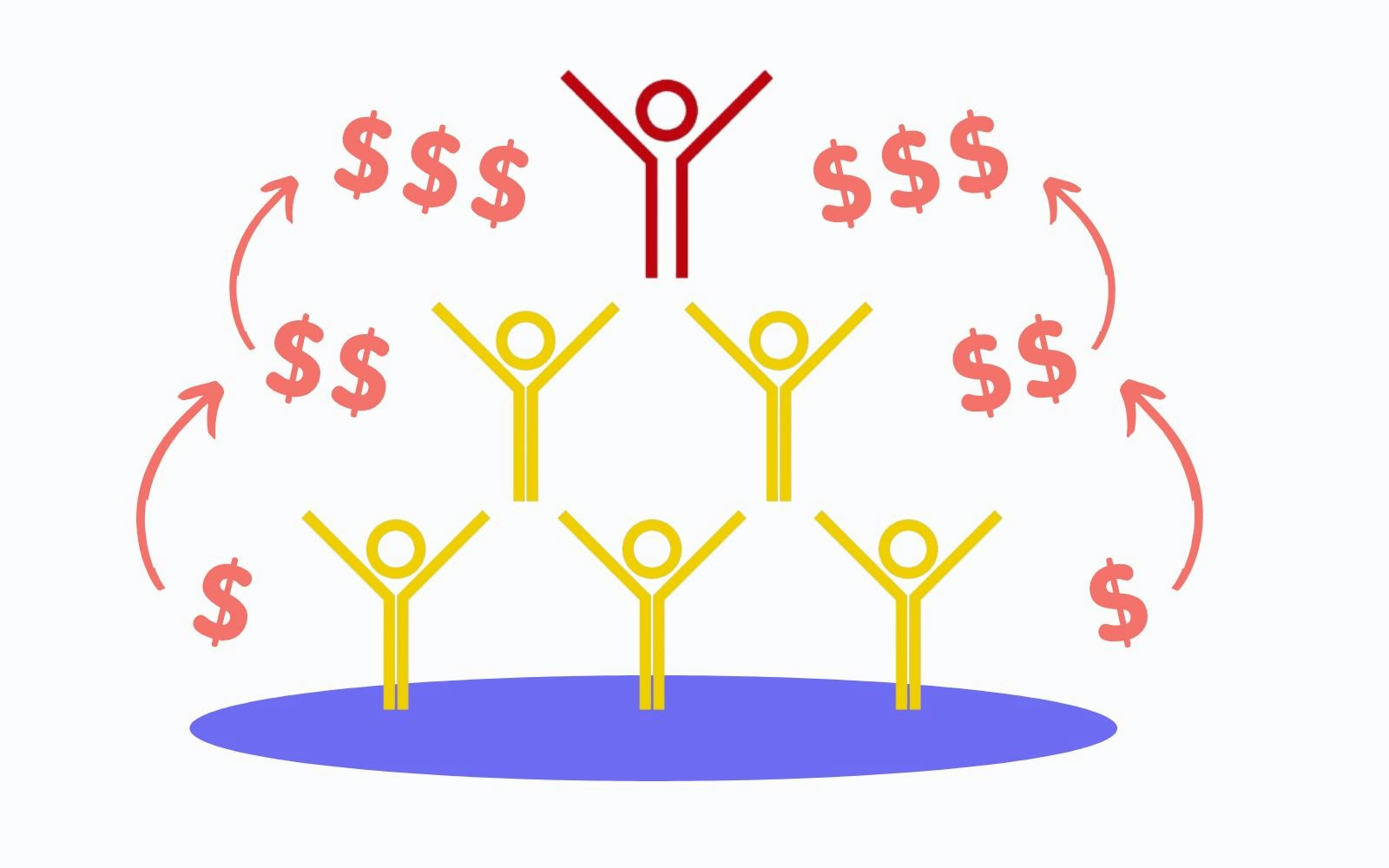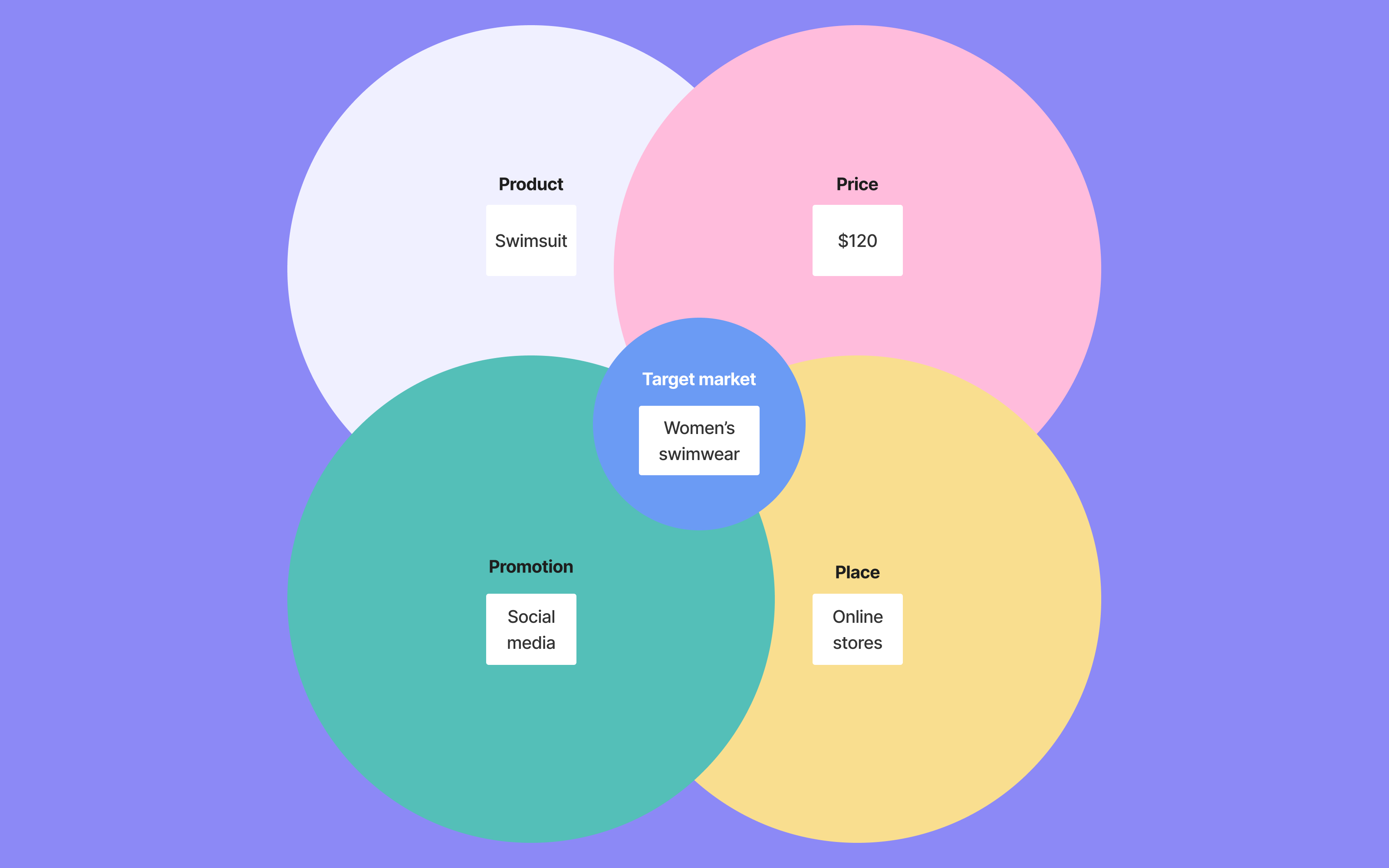
Everything you need to know about network marketing (MLM)
6min • Last updated on Dec 15, 2025

Olivier Renard
Content & SEO Manager
Network marketing, also known as MLM (Multi-Level Marketing), is a marketing strategy in which companies rely on a network of independent distributors to sell their products or services.
These distributors then recruit other members to generate income via their own network, in addition to their direct sales.
Also known as multi-level selling, MLM is often presented as a way to make extra money without the constraints of a traditional job. It is, however, criticised for its excesses and sometimes unrealistic promises.
Things to remember:
MLM (Multi-Level Marketing) is a concept based on direct sales and recruitment. Participants earn through a structured compensation plan that includes direct sales commissions and bonuses based on team performance.
It is a controversial system. It promises flexibility and additional income, but also involves abuses and fraudulent practices.
Unlike illegal pyramid schemes, MLM is a legitimate business model when income is based on selling real products or services to end consumers.
Before committing yourself, it is advisable to be well informed, to focus on quality products and to avoid unrealistic promises.
🔎 Explore all aspects of MLM: its definition, how it works, its benefits, but also its risks and controversies. Find practical advice on how to evaluate this model and identify the pitfalls as well as the opportunities. 👌
What is network marketing (MLM)?
Definition and origins
Network marketing, or MLM (Multi-Level Marketing), is a business strategy that relies on a network of independent representatives to promote and sell products or services.
This sales strategy is based on two pillars:
Distributors sell products or services
At the same time, they recruit new participants into their network, commonly referred to as ‘downline members’.
Income is generated both from personal sales and from commissions on sales made by their recruits. This principle encourages cooperation and mutual support among network members. Each distributor benefits from the success of their downline.
MLM aims to maximise sales performance through a relational approach. Personal recommendation and word-of-mouth are essential for product promotion and network expansion.
This model has its origins in the late 19th century in the United States. David McConnell, founder of the California Perfume Company (now Avon), launched a direct sales system. He relied on a network of independent saleswomen, mainly housewives, to whom he offered additional income opportunities.

David McConnell California Perfume Company
His system inspired many companies in the beauty and wellness sectors. In the 1940s, Nutrilite (which later became Amway) based its business model on network marketing.
The concept was simple: turn every satisfied consumer into a potential salesperson. In a way, ambassadors and micro-influencers before their time! 😉
Since then, MLM has grown considerably, thanks to companies like Tupperware and Herbalife. Worldwide, it represents a market worth around 200 billion dollars.
The different types of MLM
MLM structures vary from company to company. Some limit the number of levels or referrals per level, while others allow unlimited recruitment. Methods of calculating commissions may also differ.
The main types of MLM are as follows:
The unilevel plan: Each distributor can recruit an unlimited number of members at the first level, but commissions often stop after one or two levels.
Binary plan: Each distributor can recruit only two direct members, forming a binary tree structure. This model favours a balance in sales between the two branches.
Matrix plan: The number of recruits per level is limited (for example, a 3x3 matrix means a maximum of 3 direct recruits per level, up to 3 levels).

The main types of MLM
Differences from other business models
MLM differs from traditional business models in that it is decentralised and based on a network of independent distributors.
Compared with other business models such as traditional direct selling or franchising, its success depends on the ability to build and motivate its network.
However, network marketing should not be confused with pyramid schemes, which are illegal. A pyramid scheme focuses solely on recruitment, whereas MLM is based on selling useful products or services to consumers.
This key distinction ensures that MLM can be a viable business approach if practised ethically.
Criteria | MLM (Multi-Level Marketing) | Franchise |
|---|---|---|
Revenue structure | Based on personal sales and commissions from the network. | Based on revenue generated by a single business unit. |
Initial investment | Low, typically limited to a starter kit or initial stock. | High, including franchise fees, premises, and equipment. |
Autonomy | High flexibility, each distributor manages their own activity independently. | Limited autonomy, as the business follows strict franchisor guidelines. |
Support and training | Generally provided by the company through online or in-person programmes. | Comprehensive initial training and ongoing support from the franchisor. |
Ownership | No ownership of a business unit: participants represent the brand. | The franchisee owns their unit but operates under licence. |
Main objective | Recruitment and network expansion, in addition to direct sales. | Maximising sales within a specific business unit. |
MLM vs Franchise: key differences
How does MLM work?
Network marketing (MLM) is based on two key components:
direct selling
recruitment
These two activities are interconnected. Participants make money by selling products directly to customers and earning commissions from their network’s sales.
Direct sales: commission on products
Each distributor earns a commission on the products or services they sell directly to their customers. This method of remuneration encourages participants to focus on product quality and customer satisfaction.
Recruitment: gains on referrals' sales
Distributors recruit new team members to build their downline, generating income from both direct sales and the sales made by their network.
Recruitment is essential in MLM. Members increase their earning potential by expanding their team.
This generates a hierarchical structure of referrals, known as multi-levels. The sponsored members then become salespeople themselves and, in turn, can recruit other members. The sponsor (initial distributor) receives a commission on the sales made by his or her referrals and sometimes on those at lower levels.
Let's take our cosmetics example again. A person can not only sell lipsticks or creams, but also recruit acquaintances to create their own network.
In real estate, an independent agent can both sell properties and build up a team of professionals. These new agents can then recruit other members.
The importance of training and support
Success in multi-level sales depends on adequate training and support. Companies offer new members training programmes in sales, marketing and team management.
These programmes include workshops, online resources and mentoring from experienced members. This support is essential to motivate teams and ensure their performance.
On the digital side, the company often provides its distributors with digital tools, such as online shops and simplified CRMs. Social networks, emailings and retargeting campaigns help to maintain constant communication with prospects and customers.
Variable remuneration
Remuneration in MLM is based on commissions and incentive bonuses. It depends on several factors:
personal sales
the size and activity of the network
the company's commission policy
To encourage the commitment of participants, bonuses and incentives can be awarded for exceptional performance.
What are the advantages and opportunities of network marketing?
Network marketing offers advantages for both participants and companies.
For distributors, it offers incomparable flexibility. Working as a freelancer means that you can adapt your schedule to your personal needs, while pursuing other activities. This autonomy attracts people who want to generate additional income, whether to supplement a salary or to launch a full-time business.
For companies, MLM is a lever for rapid international development. By relying on local distributors, they can reach new markets without investing in heavy infrastructure.
In the dietary supplements sector, brands have built up committed communities on a global scale. By way of example, Herbalife has generated sales of 5.1 billion dollars by 2023 (Statista).
Based on personal recommendation, MLM also allows you to develop your sales skills and create a close relationship. However, it does not guarantee a high income for everyone.
What are the risks and criticisms of MLM?
Controversies and problems encountered by participants
Multi-level selling is often criticised for its promise of quick profits. Many participants join this model with high ambitions, influenced by speeches promising rapid and substantial gains.
Success rates are typically low. Nearly half of participants give up after a year's activity because they are unable to cover their costs.
In 2016, Herbalife was fined* by the Federal Trade Commission (FTC) in the United States. It had to pay $200 million to compensate distributors who had been misled by exaggerated revenue promises, and review its business model.
Social pressure is also a challenge for new entrants. They are often encouraged to recruit from among their friends and family, which can lead to tension if the financial results do not follow suit.
Another major risk is pyramid schemes, where the recruitment of new members takes precedence over the actual sale of products or services.
What's the difference between MLM and pyramid selling?
Network marketing, or MLM, is often confused with illegal pyramid schemes. It is important to distinguish between the two.
Network marketing is based on the sale of real products or services. Participants earn commission on their own sales and those of their network.
It is a legal commercial practice when remuneration is based on orders placed by consumers, and not on new distributors joining the network.
Pyramid selling, on the other hand, focuses primarily on recruiting new members rather than on the actual sale of products and services.
This system is illegal in many countries, as it is based on entry fees for new recruits. Like the Ponzi scheme, it is not viable in the long term.

Ponzi Pyramid
Conclusion
Promises of making easy money often lead to disappointment for new participants who are not fully prepared. Despite these criticisms, it is possible to succeed in MLM through an ethical and reasoned approach.
This means carrying out an in-depth analysis of the business, choosing quality products and communicating transparently. Take the time to check the legal aspects and avoid promises of getting rich quick.
The DinMo modular CDP will improve your sales performance by centralising and efficiently activating your customer data.
*Source: Wikipedia





















